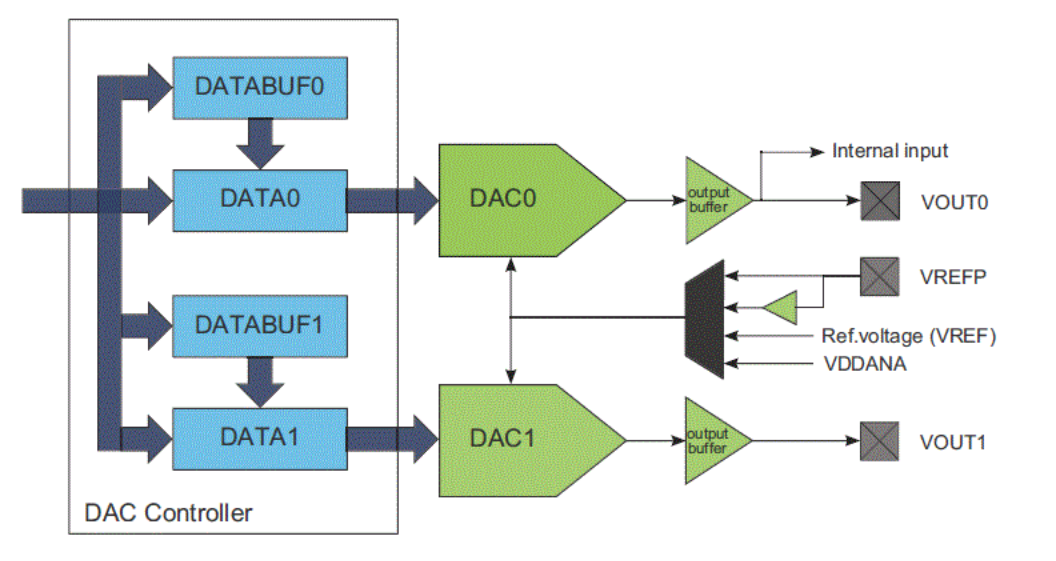The Digital-to-Analog converter converts a digital value to an analog voltage. The DAC Controller can operate as two independent DACs or as a single DAC in differential mode. Each DAC has a 12-bit resolution and it is capable of converting up to 1M samples per second (Msps).
A common use of DAC is to generate audio signals by connecting the DAC output to a speaker, or to generate a reference voltage; either for an external circuit or an internal peripheral such as the Analog Comparator.
After being set up, the DAC will convert new digital values written to the conversion data register (DATA0 or DATA1) to an analog value either on the DAC output (VOUT0 or VOUT1) pin of the device, or internally for use as an input to the AC, ADC, and other analog modules.
Writing the DATA register will start a new conversion. It is also possible to trigger the conversion from the event system.
A simplified block diagram of the DAC can be seen in Figure 1.
